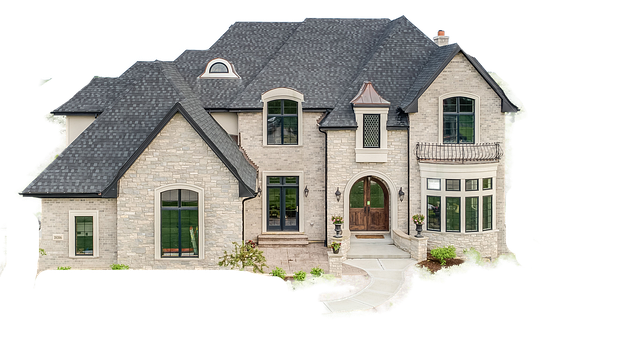Understanding your location's vulnerability to storms is key for preparation. Evaluating and fortifying your home involves addressing weaknesses like old windows and doors, roof lines, and siding. Upgrading to storm shutters, disaster-proof windows, reinforced doors, and resilient construction enhances protection against high winds, debris, water intrusion, and intruders, ensuring a safer home during natural disasters. Structural resilience is crucial; invest in strong foundations, impact-resistant roofing, proper drainage, and quality upgrades for optimal weather resistance and natural disaster readiness.
In an era where natural disasters are becoming increasingly frequent and intense, preparing your home for storms is more crucial than ever. This comprehensive guide delves into the essential aspects of storm-proofing your sanctuary, offering tailored strategies to enhance its resilience against harsh weather conditions. From identifying vulnerability points to implementing robust solutions like storm shutters and upgrading structural elements, discover practical steps to transform your home into a disaster-proof fortress, ensuring peace of mind during turbulent times.
- Understanding Your Home's Vulnerability to Storms
- Essential Components for Storm-Proofing: Windows and Doors
- Adding Extra Protection with Storm Shutters
- Enhancing Structural Resilience: The Foundation and Roof
- Smart Upgrades for a Weather-Resistant Home Interior
Understanding Your Home's Vulnerability to Storms

Understanding your home’s vulnerability to storms is a crucial first step in preparing for potential natural disasters. Different locations and housing types face varying levels of risk depending on factors like geographical features, local weather patterns, and building materials used during construction. For instance, homes in coastal areas are more susceptible to hurricane-force winds and storm surges, while those situated in mountainous regions may be vulnerable to severe thunderstorms and tornadoes.
Evaluating your home’s current state is key. Check for potential weaknesses such as old or poorly installed windows and doors that might not provide adequate disaster-proof protection. Vulnerable areas include roof lines, siding, and any openings where water could enter. Upgrading to weather-resistant home upgrades, like installing storm shutters and disaster-proof windows, can significantly enhance a building’s resilience. Consider the benefits of reinforced storm-proof doors for added safety during severe weather events, ensuring your home is better prepared to withstand potential damage from high winds and flying debris.
Essential Components for Storm-Proofing: Windows and Doors

When preparing for potential storms and natural disasters, focusing on your home’s windows and doors is crucial for achieving a disaster-proof and weather-resistant structure. These entry points are often the most vulnerable during severe weather events, so investing in quality upgrades can significantly enhance your home’s resilience. Consider installing storm shutters as a primary line of defense; these protective panels can be easily secured over windows to shield them from high winds and flying debris.
Choosing disaster-proof windows with reinforced frames and impact-resistant glass is another strategic move. These windows are designed to withstand extreme conditions, providing vital protection against broken glass and water intrusion. Similarly, storm-proof doors, equipped with robust hinges and secure locking mechanisms, offer a reliable barrier against the elements and potential intruders during a natural disaster.
Adding Extra Protection with Storm Shutters

Adding an extra layer of protection to your home’s exterior during severe weather events is a smart move for any homeowner living in hurricane-prone or tornado-affected areas. Storm shutters offer a robust solution, acting as a physical barrier against high winds, flying debris, and intense storms. These sturdy devices are designed to be installed over windows and doors, providing an additional line of defense that can significantly enhance your home’s resilience during natural disasters.
When considering storm shutter installation, homeowners have various options, from retractable shutters that can be adjusted as needed to permanent fixed panels that provide continuous protection. Modern storm shutters come in diverse styles, materials, and colors, allowing you to not only fortify your home but also maintain its aesthetic appeal. Upgrading to weather-resistant doors and windows, including storm-proof models, is another essential aspect of creating a disaster-proof home. These features ensure that your residence can withstand the harshest conditions, offering peace of mind and protection for your family during uncertain times.
Enhancing Structural Resilience: The Foundation and Roof

When preparing your home for potential storms and natural disasters, enhancing structural resilience is a key aspect of storm-proofing. Starting with the foundation, ensure it’s robust enough to withstand strong winds and heavy debris. Reinforced concrete or steel underpinnings can significantly improve your home’s stability during extreme weather events. Additionally, investing in high-quality storm shutters for windows and doors is an effective way to protect against flying debris and reduce damage from impact. These shutters act as a physical barrier, offering superior defense against storms and enhancing the overall weather-resistant nature of your home.
The roof is another critical component in disaster-proof home construction. Upgrading to impact-resistant roofing materials such as concrete tiles or metal panels can provide excellent protection against high-speed winds and falling objects. Regular maintenance, including securing loose shingles and ensuring proper drainage, further strengthens the roof’s ability to withstand adverse weather conditions. By focusing on these key structural elements, you’re taking significant steps towards making your home more resilient and ready for any natural disaster.
Smart Upgrades for a Weather-Resistant Home Interior

When preparing your home for potential storms and natural disasters, smart upgrades can significantly enhance its weather resistance and overall resilience. One of the most effective ways to protect your interior space is by investing in high-quality storm shutters. These add an extra layer of defense against flying debris and strong winds, safeguarding your windows from breakages that could lead to water damage. Storm shutters are a popular choice for many homeowners as they offer quick deployment during emergencies, providing immediate protection.
Additionally, retrofitting or replacing doors and windows with disaster-proof models is a strategic move towards a more resilient home construction. Look for features like impact-resistant glass, reinforced frames, and advanced sealing mechanisms to ensure these openings can withstand extreme weather conditions. These upgrades not only contribute to your home’s natural disaster protection but also enhance energy efficiency by creating a tighter seal against the elements, resulting in long-term savings on utility bills.
By implementing customized plans that include robust storm-proofing measures, such as reinforcing windows and doors with disaster-proof models, installing storm shutters, enhancing foundation and roof resilience, and smartly upgrading interior spaces, homeowners can significantly improve their homes’ resistance against natural disasters. These strategies ensure a safer haven and greater peace of mind during turbulent weather events, underscoring the importance of proactive preparation for natural disaster protection.
